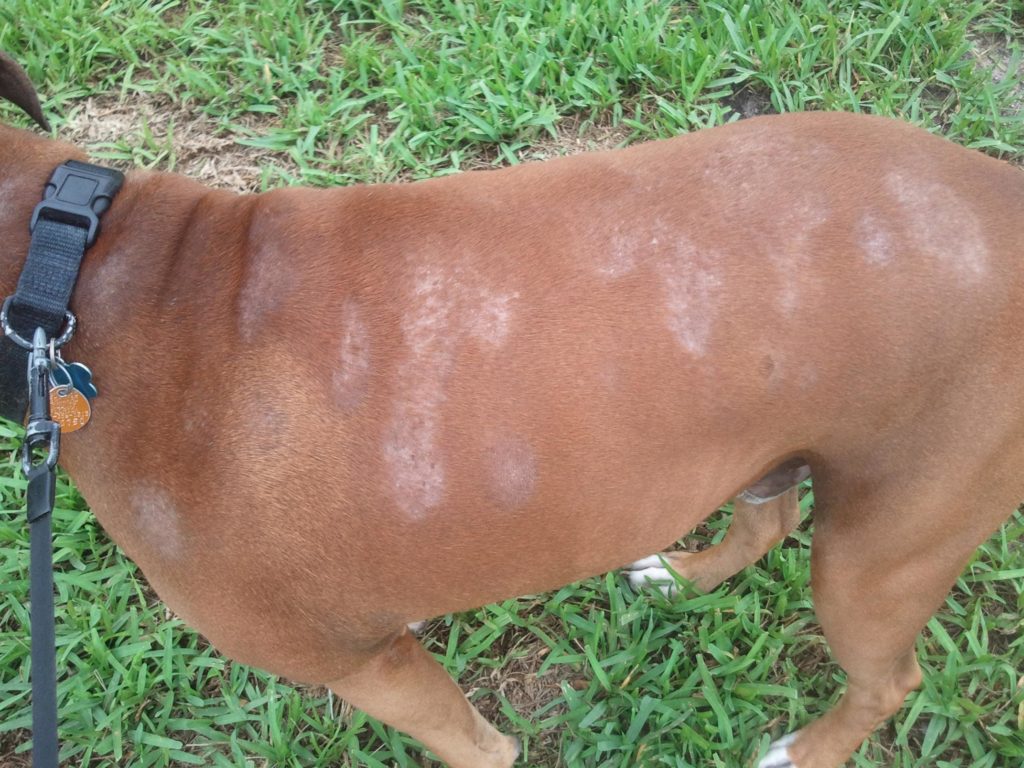Allergies are a mistaken reaction of the immune system to foreign substances. This causes an overreaction that affects the respiratory tract, skin, gastrointestinal tract, and/or cardiovascular system. Of course, people and pets can suffer from allergies; Allergies in Dogs.
If you have tried an allergy test, then the ideal treatment is avoidance of the allergen. In a few specific cases, this can be done, but most dogs are allergic to a variety of substances that make avoiding them completely impossible.

Allergies are very unpredictable, but they may be most unpredictable when giving your dog something that is supposed to help them. Dogs are susceptible to many of the same allergies humans have, including food-based ones.
Dog allergy symptoms can cause significant discomfort, but they are fairly easy to treat. They’re most often seen in the skin and ears.
While humans often outgrow their allergies, dog allergies tend to worsen as your dog gets older. There is no cure for allergies, but there are treatments available that help reduce your dog’s symptoms. The best way to go about it is to prevent it.
Table of Contents
Symptoms of Allergies in Dog
The signs and symptoms of allergies in dogs differ depending on the cause. The effects of allergies in dogs may vary depending on the breed of that dog. Symptoms of allergies in dogs include sneezing, itchy skin, vomiting and diarrhea, Hives, Swelling of the face, ears, lips, eyelids, or earflaps, Red, inflamed skin, Sneezing, Itchy ears, Chronic ear infections, Itchy, runny eyes and Constant licking.

Types of Allergies in Dog
There are many different types of allergies in dogs, all of which can cause problems for both dogs and their owners. Food allergies, environmental allergens, and skin allergies each have their own symptoms; While these different types of allergies can cause similar symptoms, each one presents a unique set of challenges for dog owners and their pets.
Flea Allergies
Flea allergy dermatitis (FAD) is the most common skin disease seen in dogs. The bite of one or two fleas per week can cause affected dogs to itch. Fleas are believed to be the allergen that causes this itchiness especially the silava of the flea. These pests can cause severe itching and hair loss or even infection of the skin, depending on how bad the infestation is.
Flea allergy dermatitis is the easiest atopic dermatitis to diagnose. The veterinarian will look for fleas on your dog’s body and apply a product that will kill the fleas before they can bite. If you see an improvement after using this treatment, it is likely that your dog has flea allergy dermatitis.
Flea allergy dermatitis, or FAD, is a disease caused by an allergic reaction to flea saliva. The most common symptom of FAD is itchy skin and irritation at the base of the tail. Other areas on the body may also be affected.
In order to treat flea allergy dermatitis, you must eliminate the fleas from your dog. Topical medications are available to kill the fleas and control itching in your dog. Some of these medications come in a liquid form that you squeeze onto your dog’s skin.
Food Allergies
Adverse food reactions are also known as food sensitivities. Dogs can develop an allergy to any type of food at any point in their lives. Regardless of whether they have eaten these brands or types of foods before, dogs can develop an allergy at any time.

Food can cause a variety of allergic reactions in dogs. One common allergy is an allergy to certain ingredients commonly found in dog food, such as beef, poultry products and grains. Food allergies may also be caused by the animal itself, such as an allergy to dairy or wheat. These foods may not show up on the label specifically but may be present in hidden ingredients.
Dogs with food sensitivities can present with several symptoms, including gastrointestinal signs such as vomiting and diarrhea, or dermatologic signs like itchiness, poor skin and coat, and chronic ear or foot infections. The best way to diagnose a food allergy is to work with your veterinarian to manage your dog’s symptoms and discover the ingredient causing the reaction.
The only way to manage food allergy in dog is to feed it a hypoallergenic diet. The diets have limited ingredients with an uncommon protein source or are processed in a special way that is less likely to cause allergic reactions.
Environmental Allergies
Seasonal or environmental allergies are caused by substances that your dog is exposed to in his environment. These allergens can be inhaled, as with pollen, or absorbed through the skin when your dog touches them. Pollen, plant fibers, dust mites, and mold spores are some of the common triggers for these allergic reactions.

Common symptoms of environmental allergies include itching, licking paws, and rubbing the face. A dog may also experience red skin, loss of fur, and recurrent skin and/or ear infections. You may see red skin or fur loss on your dog’s paws and lower legs, face, ears, armpits, and belly.
It can be treated with lifestyle changes and prescription medications. Common treatment includes desensitization, medication, and environmental improvement. If your dog experiences an allergic reaction to something he ingests, the vet will likely give him a pill that relieves his symptoms as well as instructions on how to handle the situation if it occurs again.




